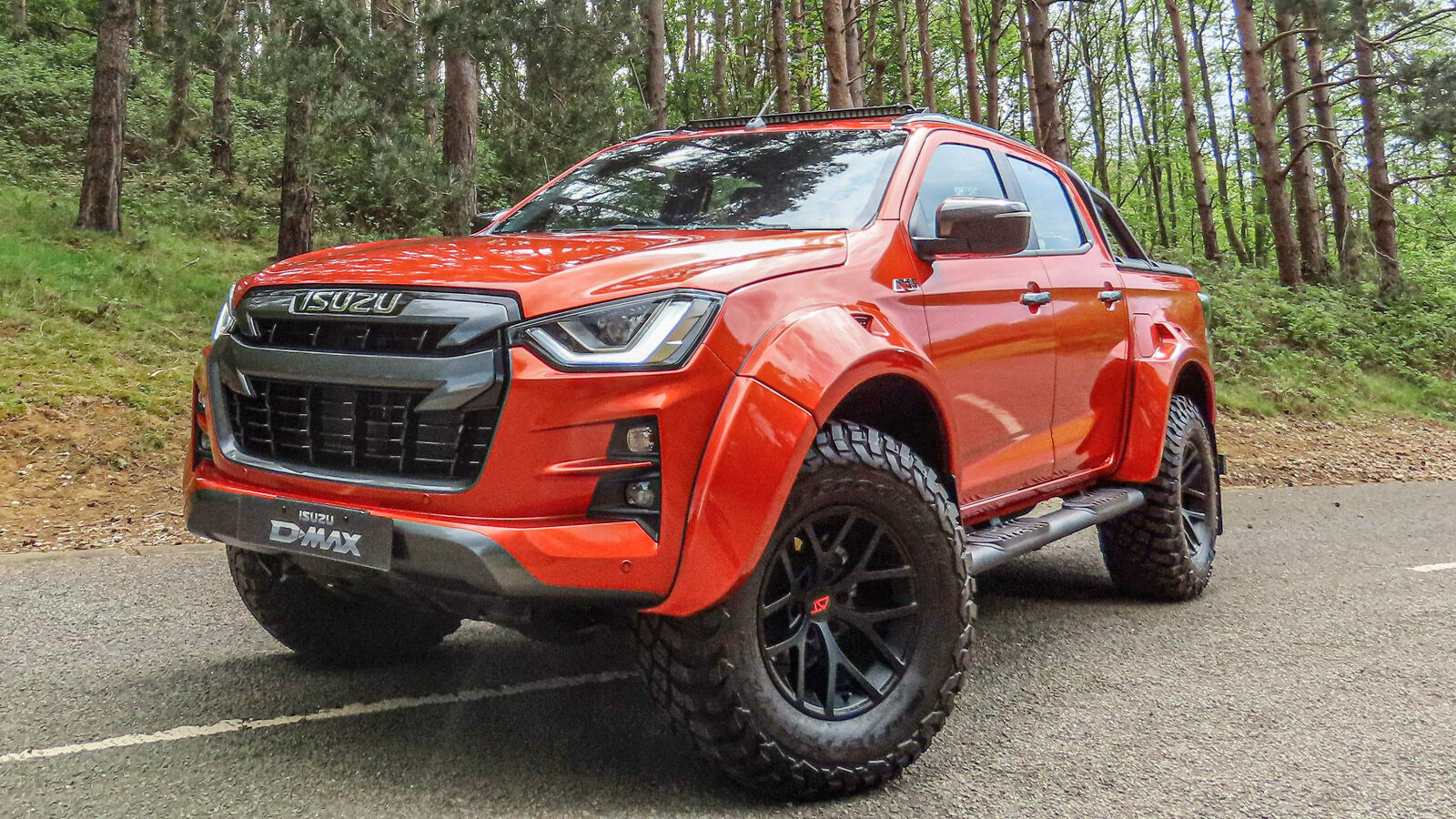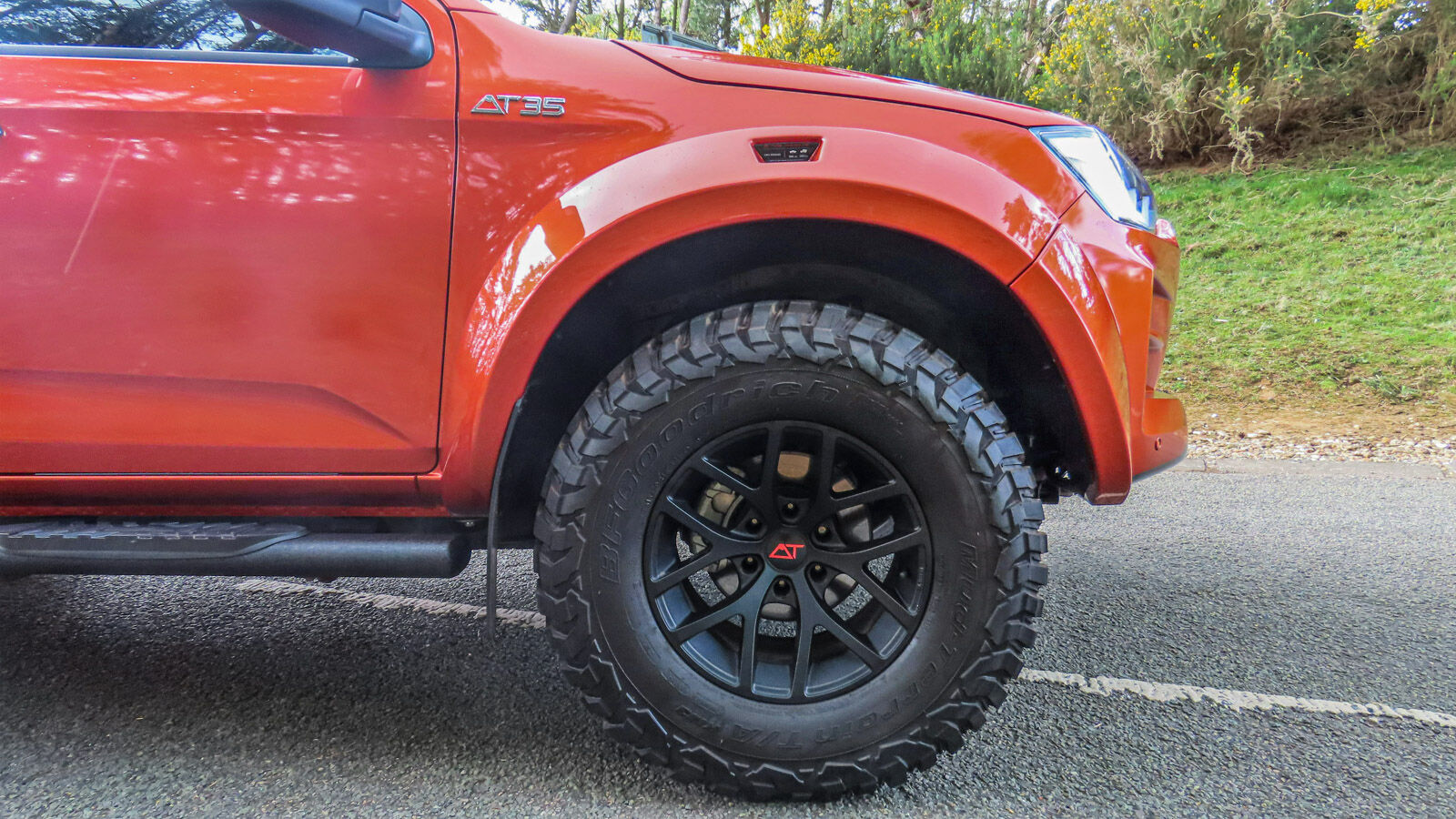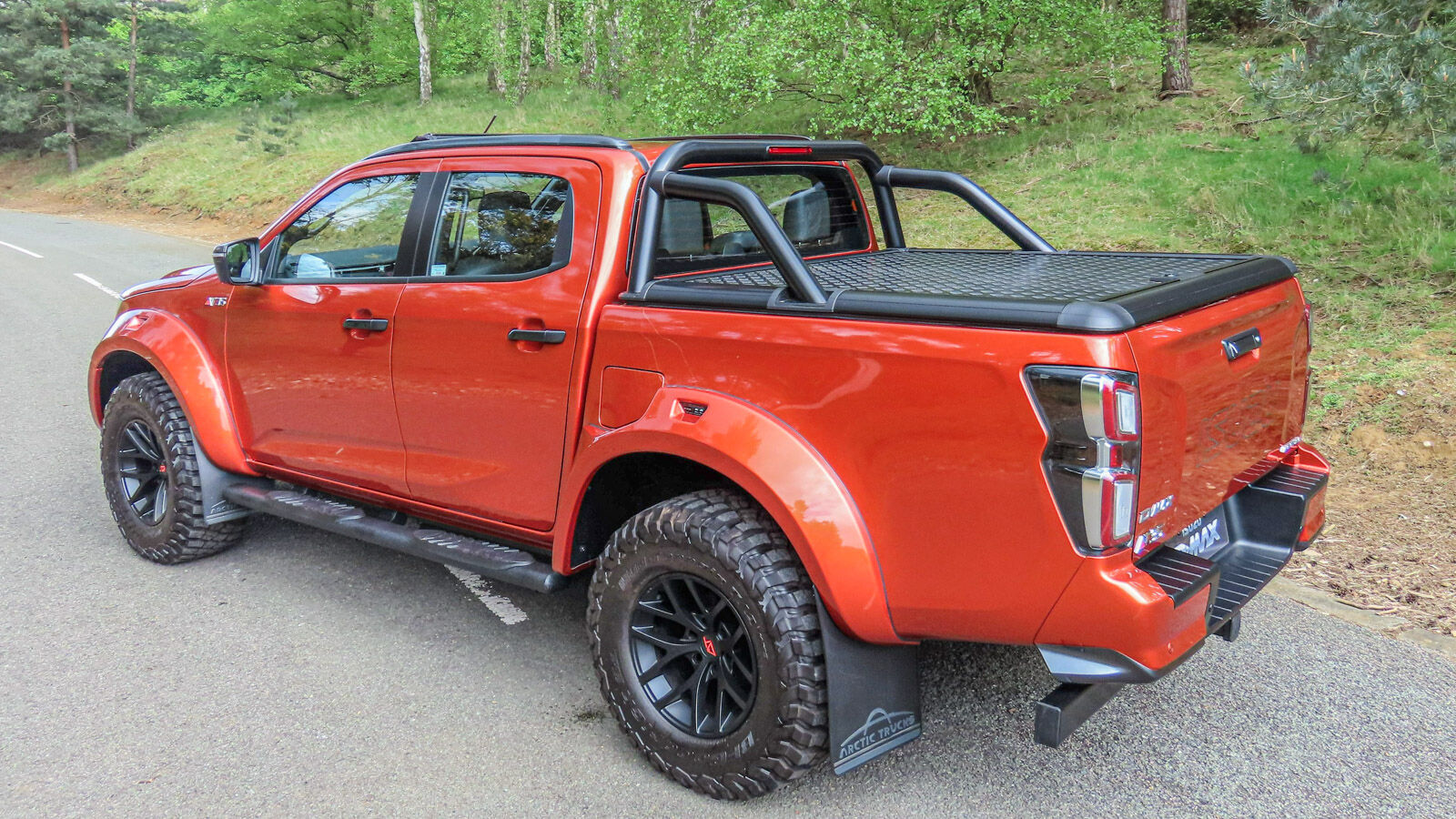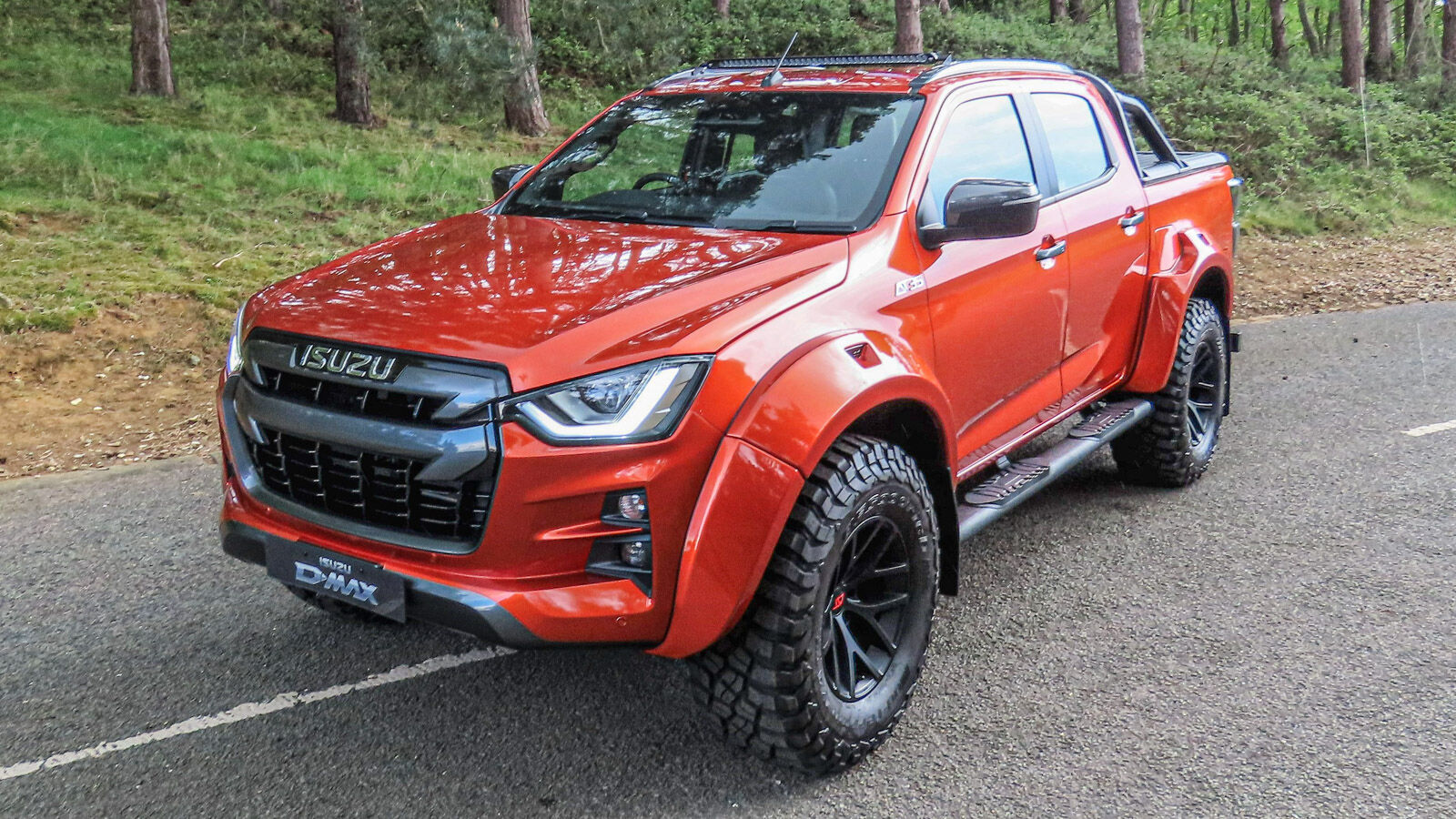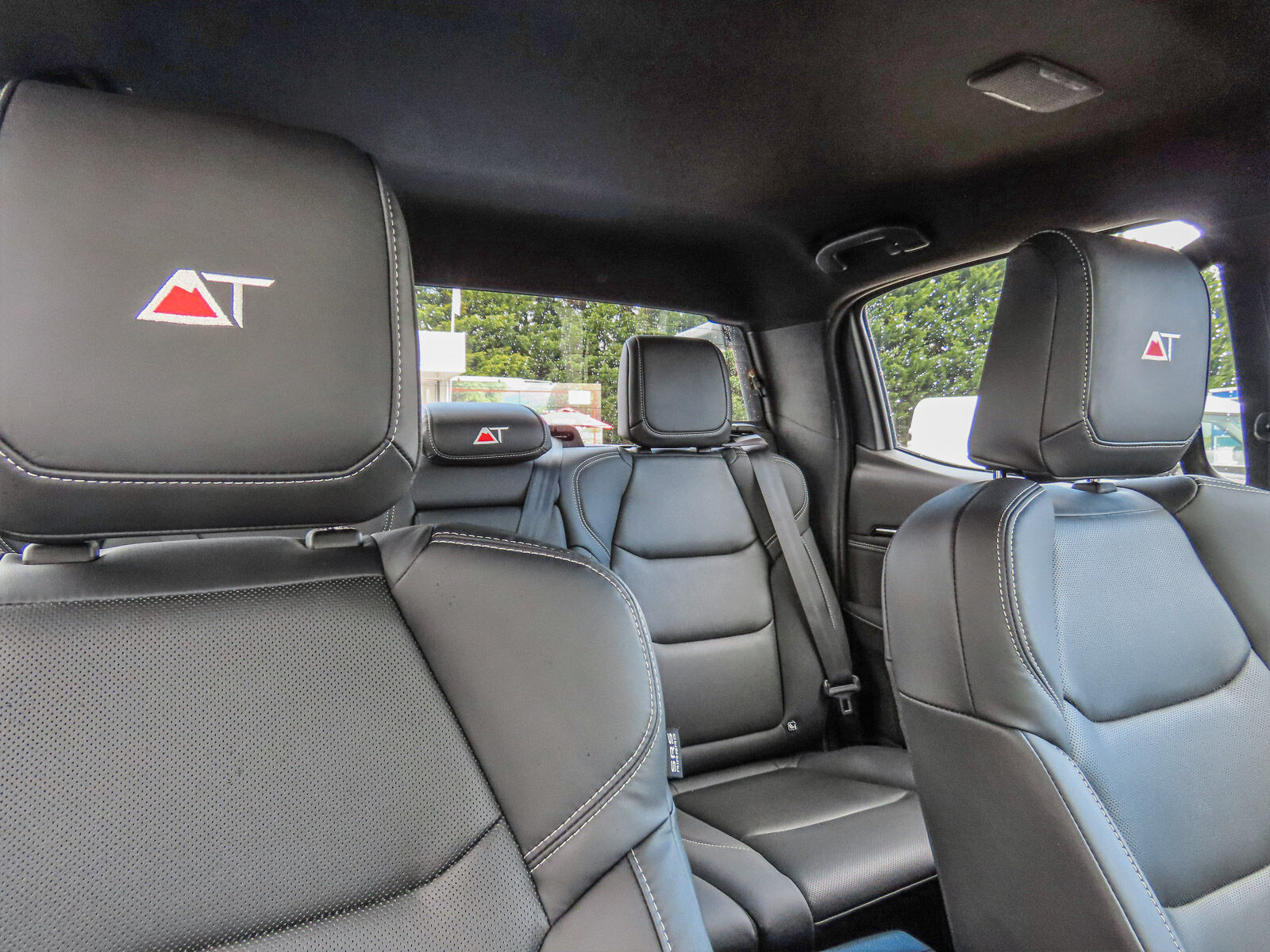Our quick spin in the Isuzu D-Max AT35 by Arctic Trucks shows there’s certainly a lot of appeal, although a couple of changes would make it really shine if it ever comes to Australia.
If you see the Isuzu D-Max Arctic Trucks AT35 anywhere other than on the side of a mountain or crossing an Arctic glacier, the term ‘fish out of water’ undoubtedly springs to mind. Indeed, those massive tyres and aggressive wheelarches really don’t fit in when you head to the supermarket. No, they literally don’t fit.
You see, not only has the Arctic truck’s suspension been raised by 50mm over the standard Isuzu D-Max, but the AT35 also covers more real estate, having been widened to ensure those 315/70 knobbly tyres still fit within the arches. As a result, it’ll quite happily fill a parking space to the very edge of the lines and is an imposing presence on the road.
So, what exactly is the point of this extreme D-Max variant? Well, as its rugged appearance might suggest, it’s been designed to take on everything you can throw at it, whether that’s crossing tundra or conquering a mountain. In fact, if you point it at pretty much anything, it should make it over with breaking sweat.
That’s not all just marketing guff, either: the very name ‘Arctic Trucks’ comes from a company that helped to develop this monstrous off-roader. Indeed, that company’s previous work includes variants of many vehicle models that have been used for everything from driving on a volcano to crossing the North Pole.
However, the good news stops there for those living in Australia, as Arctic Trucks has no presence here. And that’s a pity for enthusiasts as there aren’t all that many aggressive trucks on the market. The Isuzu D-Max AT35’s natural rival is the Ford Ranger Raptor and Nissan Navara Warrior, other utes designed to drive in the rugged wilderness. Alternatively, there are plenty of less hardcore utes that are still capable off-road, including the standard D-Max, the Ford Ranger, the Mitsubishi Triton, and the Toyota Hilux.
Is the most extreme version of the Isuzu D-Max the version we’re really missing out on then? Let’s find out.
Choosing an engine for the D-Max Arctic Trucks is really easy because there’s only one in the UK where it’s sold – the 121kW 1.9-litre turbocharged diesel. That doesn’t sound like much power for the AT35’s size, but it still proves strong enough to give it a maximum payload weight of 1045kg (1075kg if you go for the manual) and the ability to tow up to 3500kg.
From a standstill or low speeds, the Arctic Trucks has plenty of torque and pulls well, but it quickly runs out of puff. That’s something you feel particularly as speeds increase, especially when you put your foot down for a sudden burst of pace and get little more than engine noise. Lots of it at that.
Indeed, the diesel engine under that bonnet is, for want of a better phrase, very agricultural – it’s never really quiet, regardless of whether you’re at a standstill or on the move. There’s plenty of wind noise at higher speeds too, but, surprisingly, not much road noise from those huge tyres.
When you’re on the move, that ‘fish out of water’ feeling arises again. Large knobbly tyres aren’t designed for a trip to the shops or a freeway commute, so the ride isn’t great. In fact, there’s a constant fidget that moves you from side to side in your seat even on smooth roads.
The same could be said for the normal D-Max, although to a lesser extent. The Ranger rival will be a more comfortable and supple option if you’re planning to mainly drive around on roads.
The D-Max Arctic Trucks is tall, you’d probably expect it to be a wobbly thing when you end up on a winding country road. That isn’t the case, though, because its special Bilstein suspension is quite firm, giving the vehicle surprisingly good body control and reducing lean as you drive through corners.
That said, the light steering isn’t all that confidence-inspiring, only giving you a vague idea of what’s going on, so we wouldn’t really want to take it for a spirited drive. The Ranger is definitely better in this respect, giving you more precise steering and proving to be less affected by mid-corner bumps.
It’s off-road where the Arctic Trucks is really in its element, using that 266mm of front clearance and 290mm at the rear to conquer rough terrain. Meanwhile, the 35-degree approach angle, 29-degree departure angle and 34-degree breakover angle helps to ensure you can get up, in, over and through pretty much anything that stands in your way.
The list of off-road tools is extensive, including a switchable two and all-wheel-drive mode, low and high-range gears, a locking rear diff and hill-descent control. In fact, without heading into the middle of nowhere or on to a glacier, we doubt you’ll get to really explore this ute’s limits.
If you’re a fan of sitting high above the road, the commanding driving position of the D-Max Arctic Trucks will be right up your street. What’s more, the electrically-adjustable driver’s seat gives you plenty of movement and powered lumbar support to help you get comfortable. Unfortunately, the seats themselves aren’t comfortable on a long journey because the base doesn’t have much padding.
The added advantage of that high driving position is that it gives you good visibility all round, while the sizeable door mirrors help you keep an eye on how close those rear wheelarches are to obstacles. In fact, despite the initially intimidating size, it quickly becomes quite easy to keep track of all four corners and to place the D-Max where you want it. It is quite long, though, so you’ll be thankful for the front and rear parking sensors, and rear-view camera when parking.
Even in total darkness, visibility remains good thanks to the standard LED headlights and foglights. The, er, highlight is an optional LED light bar that gives new meaning to turning night into day. It’s almost comically bright but it’s nice to know you’ll be able to see even when you’re far from civilisation.
As the Arctic Trucks is structurally the same as the standard D-Max, things haven’t really changed when it comes to interior space. That means space in the front is great, spoiling the driver and front-seat passenger with lots of head and leg room, while rear space is nothing special.
Of course, when it comes to ferrying items around, the D-Max really comes into its own. That’s thanks to the 1495mm bed that can fit a standard pallet lengthways between the wheelarch intrusions. There are four tie-down hoops in the bed, one for each corner, and a damped tailgate for ease of opening. The rear bumper has a step you can stand on to reach over the sides to get at anything in the bed of the truck.
Beyond the novelty of being a massive truck, the Isuzu D-Max Arctic Trucks AT35 is just as capable as its styling suggests. In fact, unless you spend lots of your time challenging yourself and your car way off the beaten track, you’ll find it hard to really explore its limits.
On top of that, the carrying and towing capabilities remain within the top of its class. That said, the Ford Ranger Raptor, with its more powerful V6 twin-turbo engine and uprated Fox dampers is the very best of the rugged, off-road capable utes available right now. The Nissan Navara is a closer competitor to the AT35, and with the Raptor being more expensive, the AT35 might well be the kind of new model Isuzu fans and those who want a more capable off-road ute could do with locally – but with the better 3.0-litre turbo diesel instead.
Dan Jones




